PinotFile: 12.21 August 22, 2021
|
Elite California Pinot Noir Vineyards Part II
Kathleen Wilcox
This issue is Part II or second of a three-part article devoted to what I consider Elite California Pinot Noir Vineyards. As domestic Pinot Noir has enjoyed a surge in popularity over the last three decades and the consumer has become more knowledgeable, there has been an increasing emphasis on vineyard sources. Unlike Burgundy, where vineyards receive top billing on wine labels, in California the producer receives preeminence on wine labels. With that in mind, I have provided detailed information on each Elite California Pinot Noir vineyard. My listing of California Pinot Noir vineyards as “Elite” is based on twenty years of my reviews from every notable Pinot Noir vineyard in California. This compilation is meant to serve as a valuable resource for Pinot Noir enthusiasts and as a reliable guide for Pinot Noir purchases. I have chosen the word “Elite” to signify the finest or the best of their kind. I would leave the Grand Cru designation to the French because their classification is based on primarily geological and climatic conditions while my classification is based on the quality of wines consistently produced by a special vineyard. It is surprising that the popular wine literature is filled with information on grape varieties, wines, winemakers and wineries, but comparatively little detail about vineyards.
Outline of Elite California Pinot Noir Vineyards: Part II North Coast
Russian River Valley Allen Vineyard Arrendell Vineyard Dehlinger Estate Vineyard Dutton Ranch Jentoft Vineyard Olivet Lane Vineyard Porter Creek Vineyard Quail Hill Vineyard Ritchie Vineyard Rochioli Vineyard Soul Patch Vineyard Trenton Estate Vineyard Other North Coast Appellations Devil’s Gulch Vineyard (Marin County) Donum Ranch Vineyard (Carneros) Grace Benoist Ranch Vineyard (Carneros) Hanzell Estate Vineyard (Sonoma Valley) Haynes Vineyard (Coombsville)
Elite California Pinot Noir Vineyards Part II: North Coast - Russian River Valley
ENOBYTES
Russian River Valley
Allen Vineyard
Owner: Allen Family (leased to J. Rochioli Vineyards & Winery)
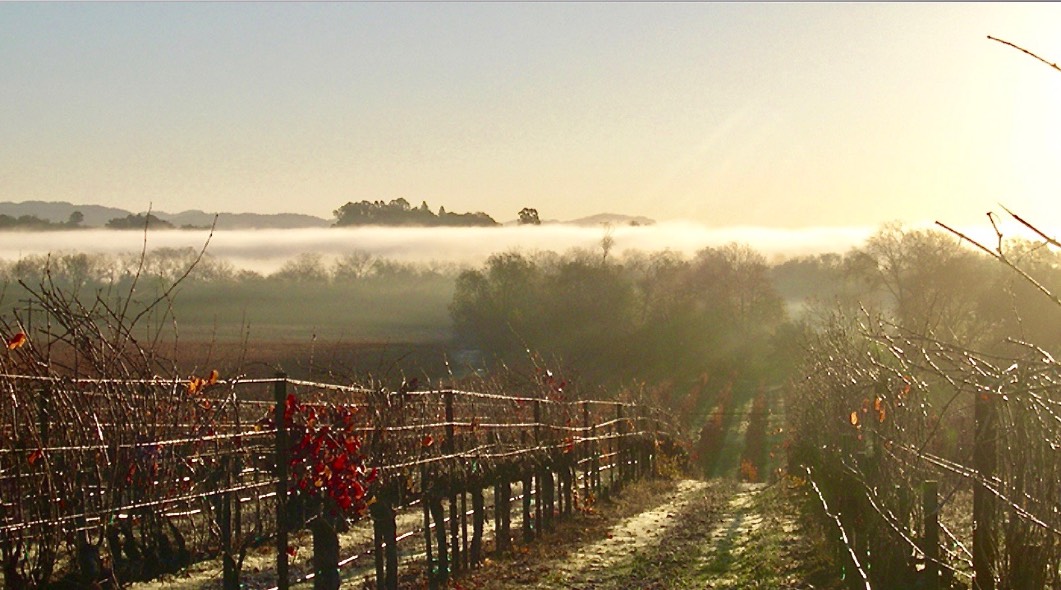
2017 Gary Farrell Rochioli-Allen Vineyard Russian River Valley Pinot Noir 13.3% alc., $80. A blend composed primarily of a Pommard selection from the old 1974 and the newer 1996 Allen Vineyard North Hill blocks, with the balance a Pommard selection at Rochioli Vineyard. · Moderately light garnet color in the glass. Alluring fragrance of Bing cherry, strawberry, baking spices and worn leather. Fresh and juicy on the palate in a mid-weight style featuring a charge of dark cherry and raspberry fruit flavors. Silken tannins and uplifting acidity drive the pleasure. A faint compliment of oak plies the background. Like biting into a ripe cherry. Reviewed June 14, 2020. Score: 93
2017 J. Rochioli Vineyards & Winery Three Corner Vineyard Russian River Valley Pinot Noir 14.5% alc., $90. · Moderately dark garnet color in the glass. The nose opens slowly over a few hours to reveal very enticing aromas of red and black cherry, baking spices ad forest floor. Mid-weight plus in concentration with flavors of blackberry, black raspberry and black cherry that make a powerful statement. A little rugged, rustic and earthy early on but when sampled several hours later, the unctuous fruit was more amendable and vivid. The tannins were quite easygoing, the texture was soft, and the finish had unusual potency and staying power. Tasted twice in May and August 2020 with consistent findings. Score: 95
2018 William Selyem Allen Vineyard Russian River Valley Pinot Noir 14.1% alc., $85. · Moderately dark garnet color in the glass. The aromas of dark cherry, raspberry, loam, graham and rose petal really grab your attention over time in the glass. Earth-toned flavors of black cherry and blackberry with Mediterranean spice. The succulent fruit has a good moderating tannic edge and the wine has its own earthy stamp. Persistent on the back end and thoroughly enjoyable. Score: 94
More reviews: www.princeofpinot.com/vineyard/151/ and www.princeofpinot.com/winery/420/
Arrendell Vineyard
Owner: Hartford Family Winery
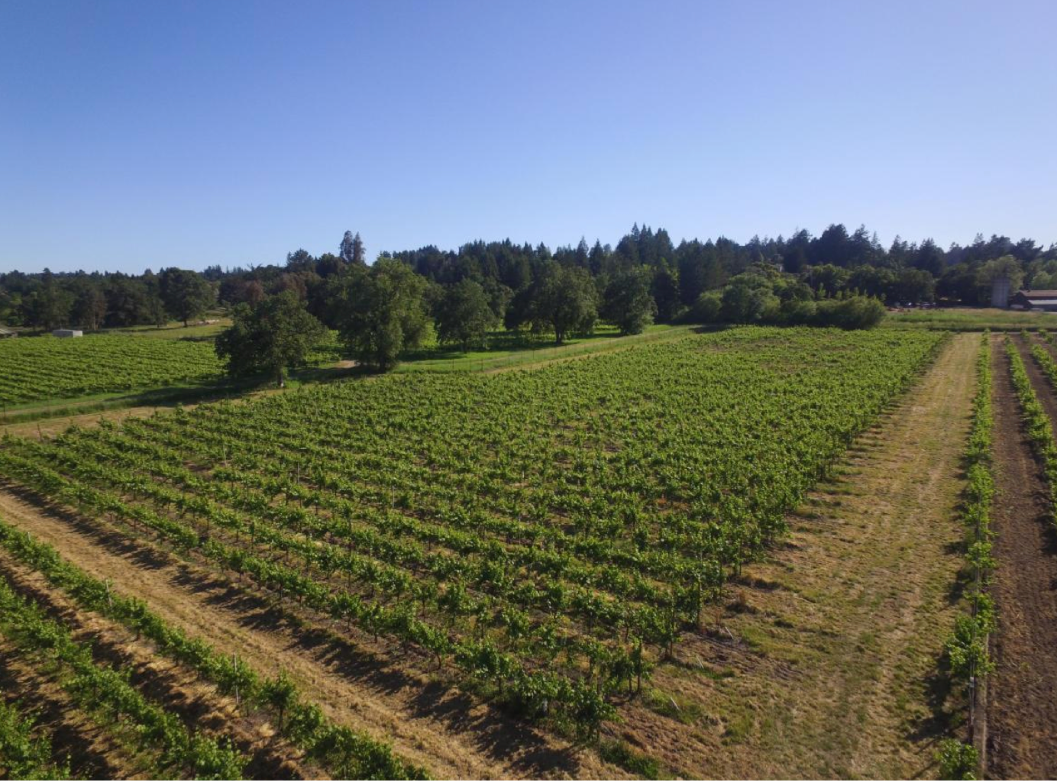
2017 Hartford Court Arrendell Vineyard Russian River Valley Pinot Noir 14.4% alc., 217 cases, $100. Aged 16 months in 44% new French oak barrels. Bottled unfined and unfiltered. · Dark garnet color in the glass. The nose opens slowly to reveal enticing aromas of blackberry, blueberry-pomegranate, earthy fora and a hint of oak. A flood of blue and black fruits envelope the palate in a mid-weight plus stye. The layers of fruit saturate the taste buds, creating a magnetic attraction, yet the wine is not cloying or sweet. There is welcome harmony with a favorable compliment of oak. The fruit really hangs on through he long, long finish that is symbolic of a special wine. Reviewed August 27, 2020. Score: 94
2018 Hartford Court Hailey’s Block Green Valley of Russian River Valley Pinot Noir 14.8% alc., 240 cases, $70. This block, planted in 1996 to Dijon clones, lies within Arrendell Vineyard. · Dark garnet color in the glass. Brooding aromas of blackberry jam, ripest cherry, dark red rose petal, earthy flora and vanilla. Blackfruited in a mid-weight-plus style with a good compliment of spice. Very gutsy with plenty of sap but everything in focus and balance. More giving when tasted several hours later from a previously opened bottle. Decant if you must drink now. Score: 92
More reviews: https://www.princeofpinot.com/vineyard/159/
Dehlinger Estate Vineyard
Owners: Tom and Carole Dehlinger
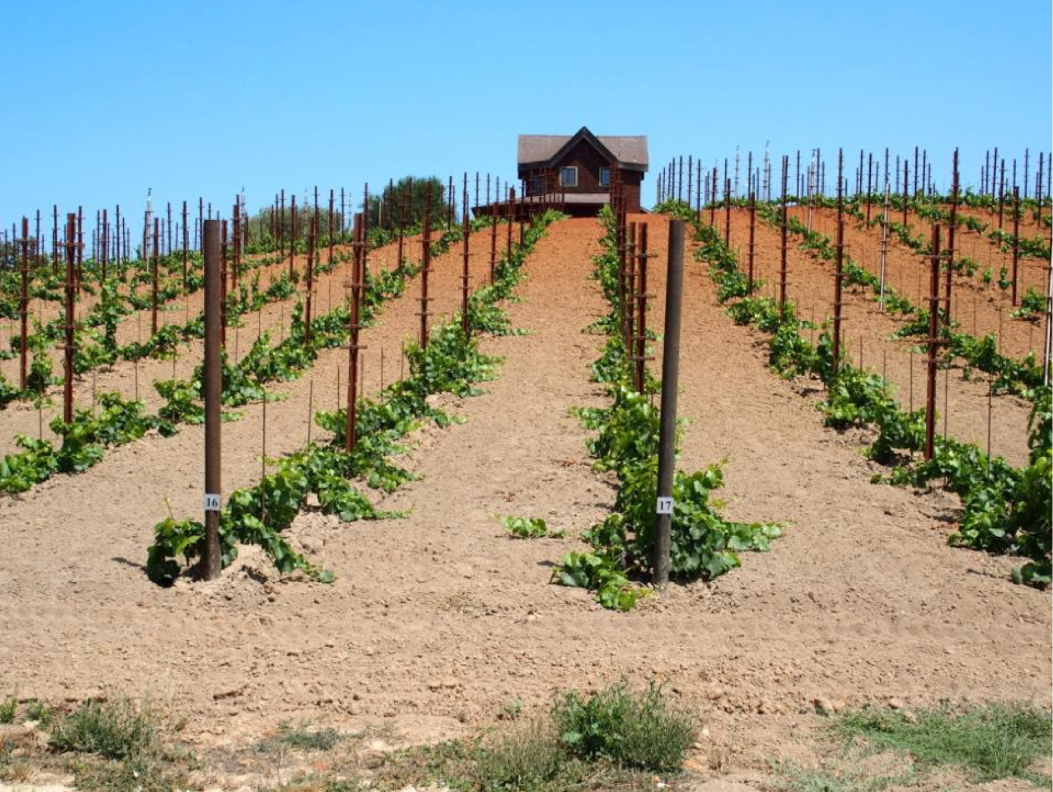
2017 Dehlinger Goldridge Russian River Valley Pinot Noir 14.5% alc., $50. · Moderate garnet color in the glass. Exceptional nose with an array of aromas including strawberry, cherry, rose petal, sage, white pepper, vanilla and cardamom. Delicious dark red cherry essence in a mid-weight style. Relatively rich but reigned in with juicy acidity and fine tannins. Excellent harmony, finishing with a jubilee of cherry aroma. Still superb when tasted two days later from a previously opened bottle. Score: 95
2018 Dehlinger Champ de Mars Russian River Valley Pinot Noir 14.5% alc., $65. · Dark garnet color in the glass. Aromas of blackberry, raw beef and a bit of new oak. Mid-weight plus in style, with an array of blue, purple, and black berry fruits augmented with spice. Nicely balanced, with gentle tannins, and a slightly dry finish. The copious, vivid fruit is the highlight. Score: 92
2018 Dehlinger Goldridge Russian River Valley Pinot Noir 14.5% alc., $60. · The nose takes its time unfolding in the glass but reaches considerable appeal over time showing aromas of black cherry, blackberry and earthy flora. Mid-weight in character, with a tasty dark red cherry core with added flavors of strawberry, raspberry and baking spices. Impressive length on the palate with an extremely long finish that goes on and on. My only nit is the slight sense of alcoholic heat. Score: 94
More reviews: https://www.princeofpinot.com/vineyard/527/
Dutton Ranch Jentoft Vineyard
Owner: Dutton Ranch (joint lease between DuMOL, Occidental Wines, and Dutton Ranch).
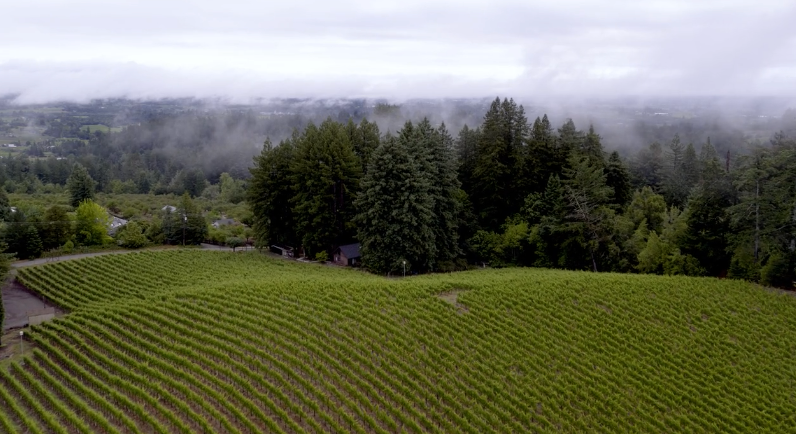
2016 Dutton-Goldfield Deviate Sonoma Coast Pinot Noir 14.5% alc., 499 cases. $72. A blend of grapes from Jentoft Vineyard and Putnam Vineyard (near Annapolis on the West Sonoma Coast). 100% de-stemmed. Aged 15 months in 55% new French oak barrels. · Dark garnet color in the glass. A message of quality is clear in this wine that leads off with aromas of black cherry, wine cave and nutty oak. Expansive, mouth filling purple and black berry fruits engage the mid palate with purpose and persist through a very long finish. There is just a kiss of oak, a touch of spice, and a subtle smoky thread. The tannins are invisible and the overall impression is one of harmony. Even better when tasted two days after opening. Reviewed November 17, 2018. Score: 94
2017 DuMOL Jentoft Vineyard “Ryan” Russian River Valley Pinot Noir 14.1% alc. · Moderately dark garnet color in the glass. Soaring aromas of dark cherry, blackberry jam, underbrush, spice and malt. Strikingly luscious black currant and blackberry fruits composed in a mid-weight plus style. Undertones of spice and anise. Very full on the palate with felty tannins and an intensely fruity and lengthy finish. The fruit is ultra-ripe and approaches prune in tone, my only nit. This wine displays very enthusiastic fruit from a relatively young vineyard. More appealing when tasted the following day from a previously opened bottle with more harmony, more gentle power and a huge, I mean huge, long finish. Score: 94
2018 DuMOL Jentoft Vineyard “Ryan” Russian River Valley Pinot Noir 14.1% alc. · Moderately dark garnet color in the glass. Lovely aromas of black cherry, cardamom spice, dark rose petal and Bailey’s Irish Cream. I could not get enough of this nose and I would have been perfectly happy to just inhale the aromas without drinking the wine. Flat-out delicious mid-weight plus, sumptuous flavors of black cherry and black raspberry, with a compliment of engaging spice. A full gulp of fruit yet the wine has polish and agreeability, and flows like silk across the palate. There are absolutely no hard edges in this ephemeral wine that grabs on like tentacles and refuses to give up its hold on the finish. Score: 97
2018 Marine Layer Jentoft Vineyard Sonoma Coast Pinot Noir 13.2% alc., 125 cases, $65. 30% whole cluster. Native yeast fermentation. Aged 16 months in French oak barrels, 35% new. Bottled unfined and unfiltered. · Moderately light garnet color in the glass. Aromas of cherry, cranberry, wintergreen, and sweet pipe smoke. Mid-weight in character, with flavors of red and black cherry, strawberry, and dried herbs. Silky on the palate with minimal tannins and a juicy finish with some length. There is a subtle vegetative green quality to this wine due to underripe fruit and or whole cluster. Score: 91
More reviews: www.princeofpinot.com/vineyard/1920/.
Olivet Lane Vineyard
Owner: Robert Pellegrini
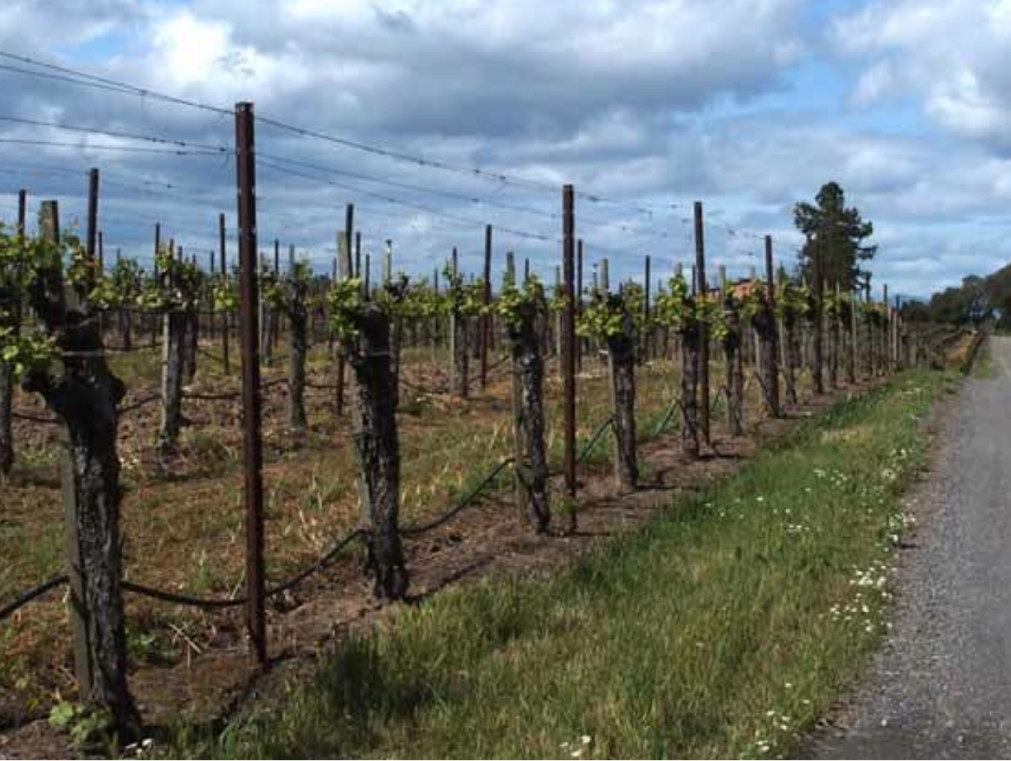
2016 Olivet Lane Vineyard Russian River Valley Pinot Noir 13.9% alc., $65. Aged 14 months in 35% new French oak barrels. · Moderate garnet color in the glass. Nicely perfumed with aromas of black cherry, blackberry, spice and a hint of espresso. A quintessential Martini clone Pinot Noir featuring mid-weight flavors of dark Bing cherry, blackberry, cola and loads of spice.The intensity of the fruit makes quite an impression and the polished, matched tannins make for easy drinking. The lengthy finish is awash in vibrant fruit with just a hint of oak trailing off at the end. Reviewed August 27, 2020. Score: 93
2017 Merry Edwards Olivet Lane Vineyard Russian River Valley Pinot Noir 14.5% alc., 730 cases, $68. · Dark garnet color in the glass. Aromas of dark berry jam, wine cave, old book and vanilla. Mid-weight plus flavors of blackberry, cassis, and pomegranate with a touch of iron. A big, bold, ripely-fruited expression of Pinot Noir with supportive tannins. The deep well of fruit has charm, the wine stays in balance, but the wine enters a little stronger than it finishes. Reviewed July 20, 2019. Score: 90
2018 Williams Selyem Olivet Lane Vineyard Russian River Valley Pinot Noir 14.1% alc., $78. · Moderately dark garnet color in the glass. Aromas of beef bouillon, chamomile tea, and cardamom spice. Mid-weight flavors of black cherry, blackberry and black tea. Nicely balanced with gracious tannins and a long, quenching finish. Rather exotic and unique. I have never encountered the aroma and taste of chamomile tea in a Pinot Noir prior to this. Pinot Noir always provides surprises. Reviewed August 27, 2020. Score: 92
2019 Williams Selyem Olivet Lane Vineyard Russian River Valley Pinot Noir 13.5% alc., $98. · Moderately dark garnet color in the glass. A complex nose with blackberry, dark chocolate and earth aromas. A hearty core of blackest cherry and blackberry fruits with inviting undertones of earth and umami. Very polished with impeccable balance. Easygoing tannins make for good approachability now. A very honorable wine because it reflects both the clone (in this case Martini) and the unique terroir. Stellar when tasted the following day from a previously opened bottle. This beauty will grow on you over time in the glass. Score: 95
More reviews: www.princeofpinot.com/winery/294/.
Porter Creek Vineyards
Owner: Alex Davis, George Davis
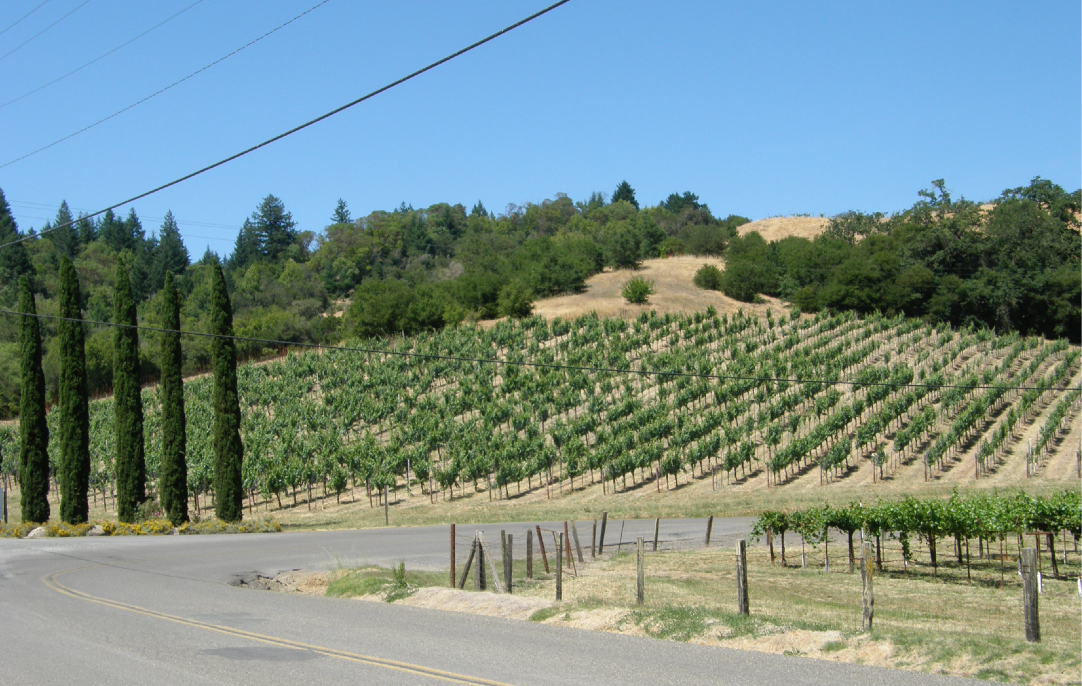
2017 Porter Creek Fiona Hill Vineyard Russian River Valley Pinot Noir 13.6% alc., $52. · Moderately dark garnet color in the glass. Earthbound aromas of dark chocolate, black cherry, blackberry jam and root beer. Plenty of body and weight with good mid-palate presence. Flavors of blueberry, black cherry and blackberry with a touch of dark chocolate framed by a firm backbone of tannin and a bit of oak. The fruit really hangs on at the finish which is marked by slight alcoholic heat. Score: 92
2017 Porter Creek Winegrower’s Reserve Russian River Valley Pinot Noir 13.9% alc., $65. · Moderate garnet color in the glass. Shy but redeeming aromas of Bing cherry, spice, and cola. Very sleek in the mouth, featuring black raspberry and blackberry fruit flavors framed by firm tannins. A little rustic, rugged and reserved at present, with the fruit only peaking out. A serious wine with long-term potential. More appealing when tasted the following day from a previously opened bottle but the tannins remained a bit daunting. Score: 93
2017 Porter Creek Hillside Vineyard - Old Vine Russian River Valley Pinot Noir 12.7% alc., $72. · Moderately dark garnet color in the glass. Aromas of cherry, raspberry coulis and spice cabinet. Mid-weight in style, offering plenty of enjoyable black cherry, raspberry, and cola flavors with a bit of umami and a dusting of oak. There are some tannins but they are not intrusive. The juicy finish is particularly enjoyable with good cut. A somewhat demure, interesting wine that excites with signature Pinot Noir character. Noticeably better when tasted the following day from a previously opened bottle. Score: 94
2018 Porter Creek Estate Russian River Valley Pinot Noir 13.6% alc., $40. · Moderate garnet color in the glass. Inviting aromas of dark cherry, red rose petal, earthy flora, warm croissant and a rub of oak. Glorious Bing cherry core with a hint of strawberry and oak. Juicy, with modest tannins. Easy to drink now, but lacks a little mid-palate and finishing richness. Score: 91
More reviews: www.princeofpinot.com/winery/1006/.
Quail Hill Vineyard
Owners: Anisya and Lynn Fritz (Lynmar Estate)
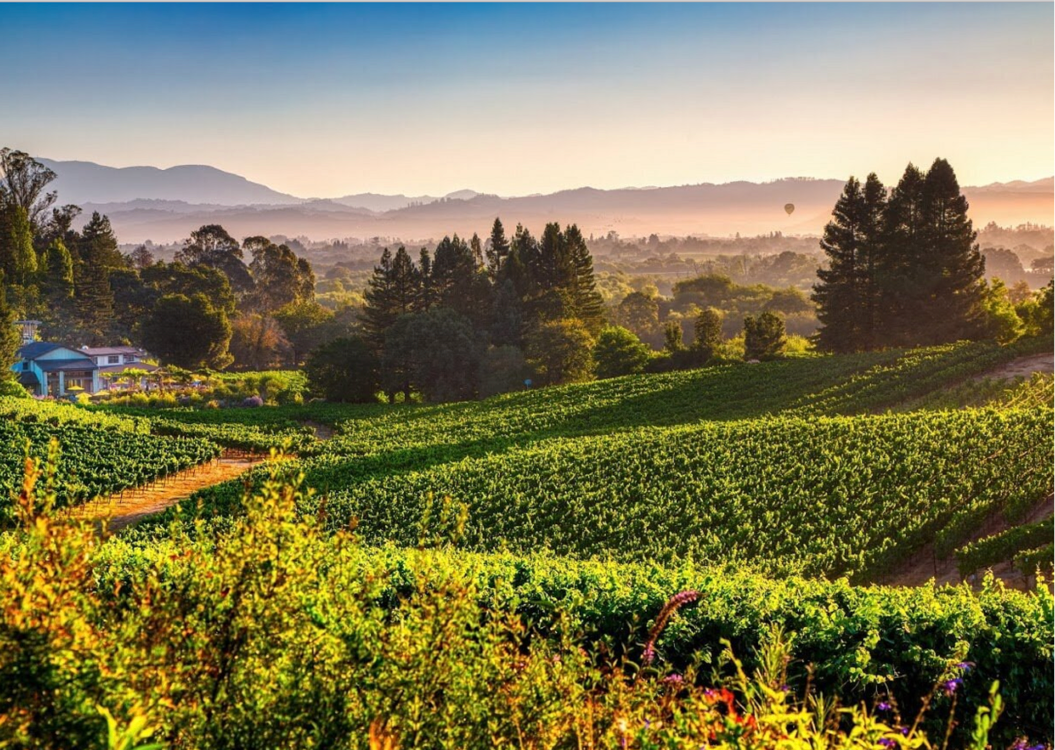
2017 Lynmar Estate Old Vines Quail Hill Vineyard Russian River Valley Pinot Noir 14.5% alc., $80. Swan selection old vines of Block 2 go exclusively into the Old Vines bottling. · Moderate garnet color in the glass. Charming aromas of cherry, rose petal and baking spices. I love the floral aspect of the nose that is like wild cherry sprinkled with fresh flowers. Mid-weight flavors of black cherry, black raspberry, blackberry and dark chocolate address the palate without overreaching sweetness. The mouthfeel is luxurious, the tannins are inline, and the finish is long and rewarding. Still exceptional when tasted the following day from a previously opened bottle. An old vine treasure. Reviewed August 27, 2020. Score: 95
2018 Lynmar Estate Quail Hill Vineyard Russian River Valley Pinot Noir 14.4%, $70. All 14 clones planted in the estate vineyard are included, representing the complexity of the site. · Moderately dark garnet color in the glass. Really enticing perfume of spiced black cherry, cola, mocha and warmed earth. A mid-weight mixed bag of spiced purple and black fruits are very giving. Well-ripened, but not over-ripened fruit profile. Nicely composed with gentle tannins and good finishing length. A very solid wine that elicits spicy thoughts. Score: 93
More reviews: www.princeofpinot.com/vineyard/486/.
Ritchie Vineyard
Owner: Kent Ritchie (since 1974)
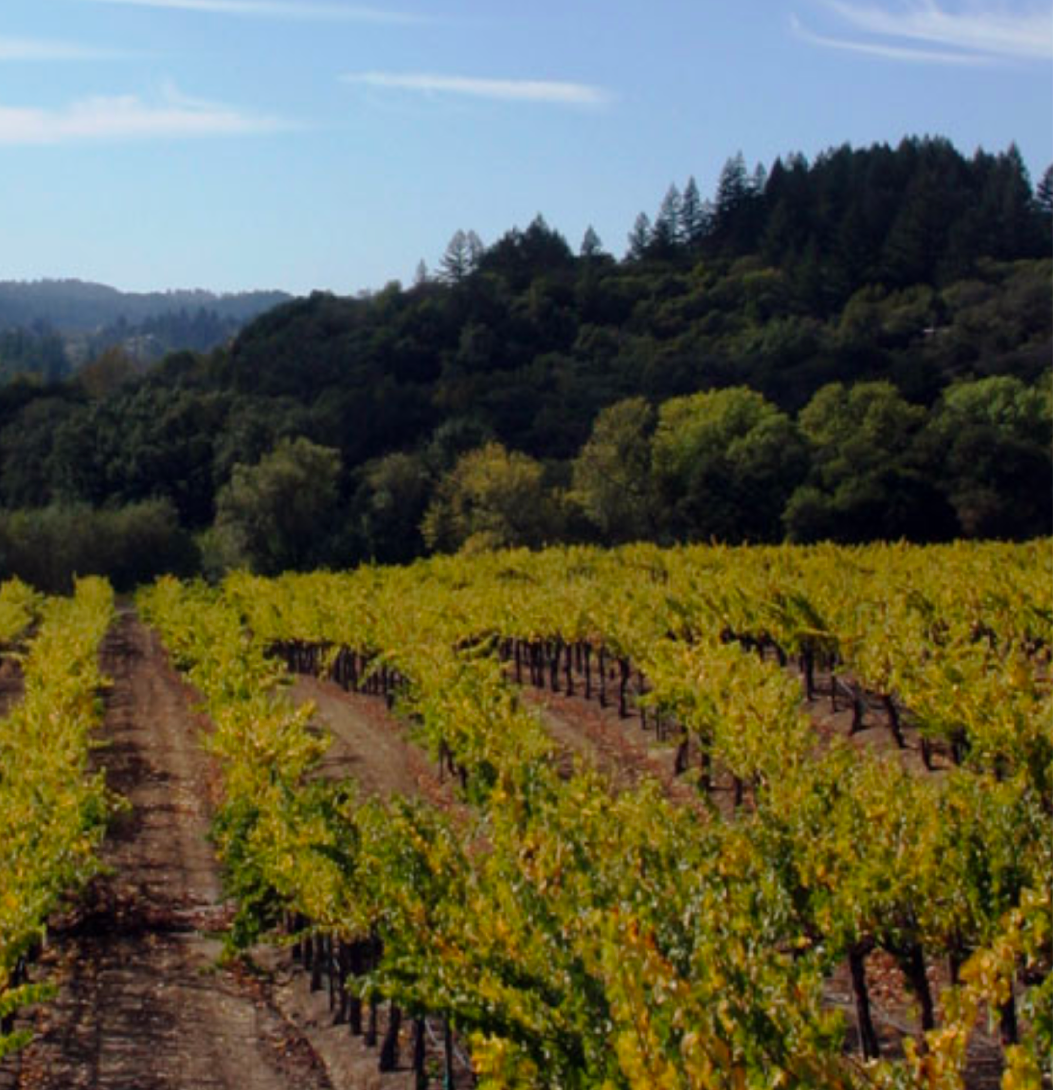
2014 Woodenhead Ritchie Vineyard Cinder Cone Russian River Valley Pinot Noir 13.0% alc., $65. · Dark garnet color in the glass. A Pinot Noir nose to die for, with the glorious perfume of black cherry, spice and rose petal. Nothing is out of place in this mid-weight plus styled beauty offering layers of gregarious dark cherry and purple berry fruit flavors that caress the palate with silkiness. Impeccable harmony and a lengthy finish that provides a juicy, citric edge. This wine simply tastes damn good. Reviewed August 27, 2020. Score: 95
2015 Woodenhead Ritchie Vineyard Cinder Cone Russian River Valley Pinot Noir 13.4% alc., $65. · Dark garnet in color in the glass. Leading off are enticing scents of dark cherry and berry, and forest floor. Fullbodied in style, with a reaching, expansive core of spiced black cherry fruit that keeps opening in the glass. Richly endowed with fruit sap yet endlessly gentle. Ready now for prime time with ripe, gracious tannins and a very long finish brimming with fruit goodness. Reviewed August 27, 2020. Score: 95
More reviews: www.princeofpinot.com/vineyard/364/.
Rochioli Vineyard
Owners: Rochioli family (J. Rochioli Vineyards & Winery)
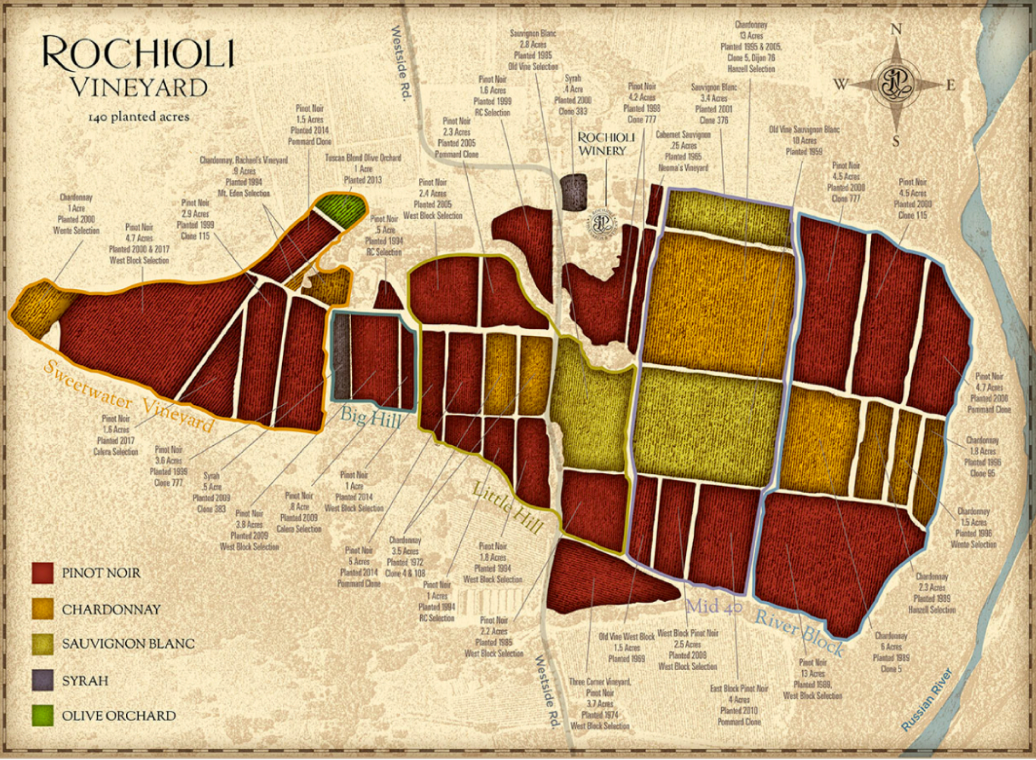
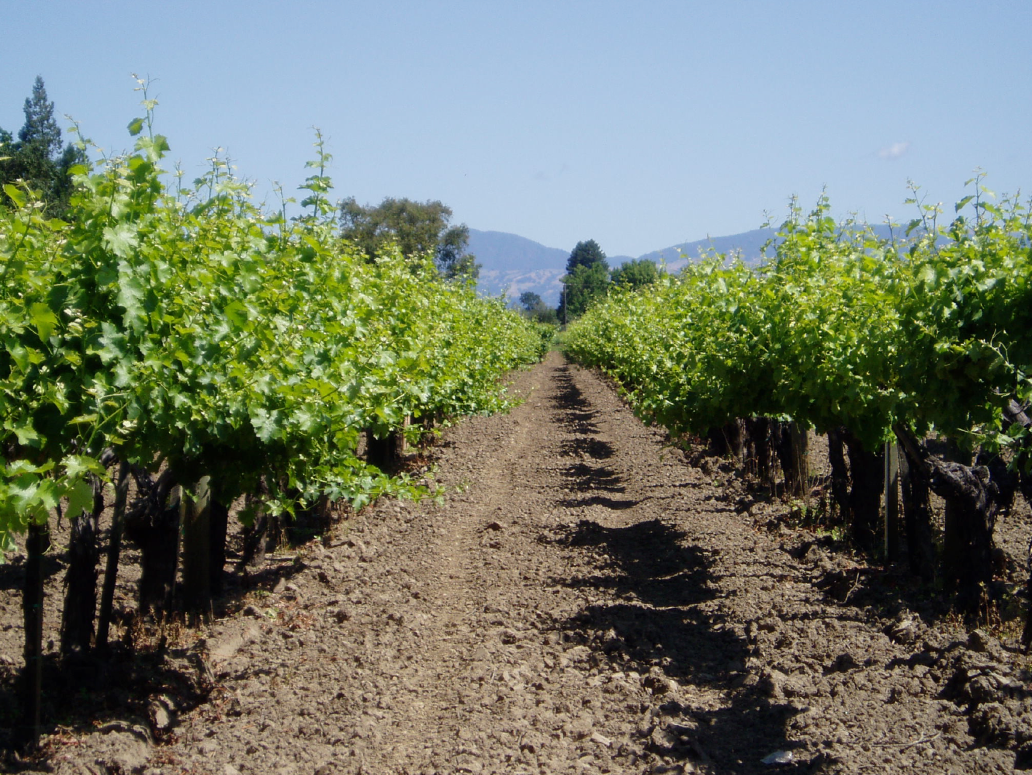
2017 Castalia Rochioli Vineyard Russian River Valley Pinot Noir 14.5% alc., $60. · Moderately light garnet color in the glass. Very earthy aromas present upon opening with cherry and leather in the background. Suave in the mouth, with plenty of appealing black cherry and raspberry fruits with undertones of earth, mushroom, spice and sarsaparilla. The tannins are silken making the wine approachable upon opening, but the wine is considerably more fruit-centric and aromatic when sampled the following day from a previously opened bottle. The cherry-driven finish shows excellent persistence. This wine does not possess the sap of the J. Rochioli Pinot Noirs, but with a more earthy character is equally appealing in its own way. Review May 3, 2020. Score: 94
2017 Gary Farrell Rochioli Vineyard Russian River Valley Pinot Noir 13.6% alc., $80. A blend of three blocks planted in 1974, 1995 and 2000. A challenging harvest due to a severe heat wave. Harvest Brix 22.0º-24.5º. 85% of grapes de-stemmed. 10-15 day extended maceration. Aged 15 months in 40% new French oak barrels. · Moderately light garnet color in the glass. Aromas of red cherry, strawberry, blueberry, spice and toasty oak working in harmony. Light to mid-weight in style, with plenty of cherry goodness. Oak plays a rather prominent role with notes of spice and toast. The lip-smacking finish lasts for what seems like a minute. Very gentle tannins and easy to enjoy now. Not as bold or ripely fruited as the typical Pinot Noir from this vineyard, even a little shallow in comparison, but shows the signature acidity (pH 3.43, TA 0.71) that Gary Farrell wines are known for. Score: 93
2018 Rochioli Estate Russian River Valley Pinot Noir 14.5% alc., $64. A blend of all the single vineyards making up the Rochioli Estate: 40% Sweetwater, 39% Little Hill, 12% Big Hill, 6% West Block and 3% East Block. · Moderately dark garnet color in the glass. The nose opens over time to reveal aromas of black cherry cola, spice and warm brioche. A charming wine featuring the essence of black cherry accompanied by a spice and savory herb component. Easygoing, with balanced tannins and a slight sense of alcohol on the modest finish. Score: 92
2018 Williams Selyem Rochioli Riverblock Vineyard Russian River Valley Pinot Noir 14.2% alc., $85. · Moderately dark garnet color in the glass. Flattering aromas of Bing cherry, oak spice, pipe smoke, raisin and maple syrup. Exhibiting gentle hedonism on the palate in a mid-weight style, with striking flavors of black cherry, blackberry and Dr. Pepper with the fruit veering to full ripeness. Merged tannins, a shadow of oak in the background, and an earthiness that emerges on the long finish leaves a good impression. Score: 94
2019 Williams Selyem Rochioli Riverblock Russian River Valley Pinot Noir 14.1% alc., $90. Older vines from 1989 make up the bulk of the wine. · Moderately dark garnet color in the glass. Distinctively Rochioli fruit with aromas of Bing cherry, Chinese 5-spice as well as noticeable toasty oak. Mid-weight plus in style, with expansive and bombastic Bing cherry flavor underlain with a note of cardamom spice. Reserved tannins and easy approachability out of the gate. Big-time goodness and lengthy resolve with a glorious cherry-fueled finish. My only nit is the oak treatment is noticeable. Score: 95
More reviews: www.princeofpinot.com/vineyard/343/.
Soul Patch Vineyard
Owners: Guy and Judy Davis (Davis Family Vineyards)
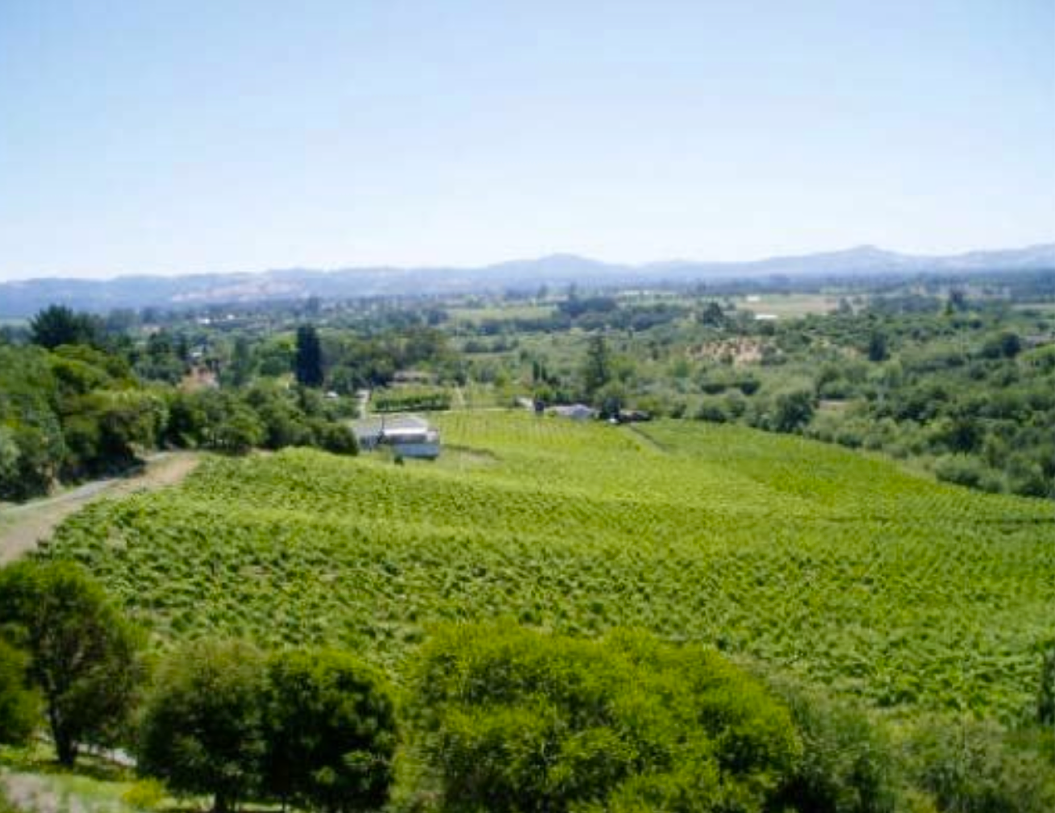
2018 Davis Family Vineyards Soul Patch Vineyard Russian River Valley Pinot Noir 13.0% alc., $55. Native yeast fermentation. Aged 10 months in 33% new, 33% one-year-old and 33% 2-year-old French oak barrels. A selection of the winemaker’s favorite barrels from Soul Patch Vineyard. · Dark garnet color in the glass. Up-front aromas of blackberry, spice cake and Dr. Pepper. Mid-weight plus in style and very comforting in the mouth, with a glorious display of well-spiced, blueberry, olalliberry, black raspberry and blackberry fruit flavors framed by supportive, ripe tannins. Impeccable balance, finishing with the perfume of lovely Pinot must. Highly drinkable now, but the harmony and tannic backbone predict at least a 2-year life ahead. This beauty is like the gorgeous girl in school you always wanted to date. Reviewed April 10, 2021. Score: 97
More reviews: www.princeofpinot.com/vineyard/1591/.
Trenton Estate Vineyard
Owners: Rod and Lynn Berglund (Joseph Swan Vineyards)
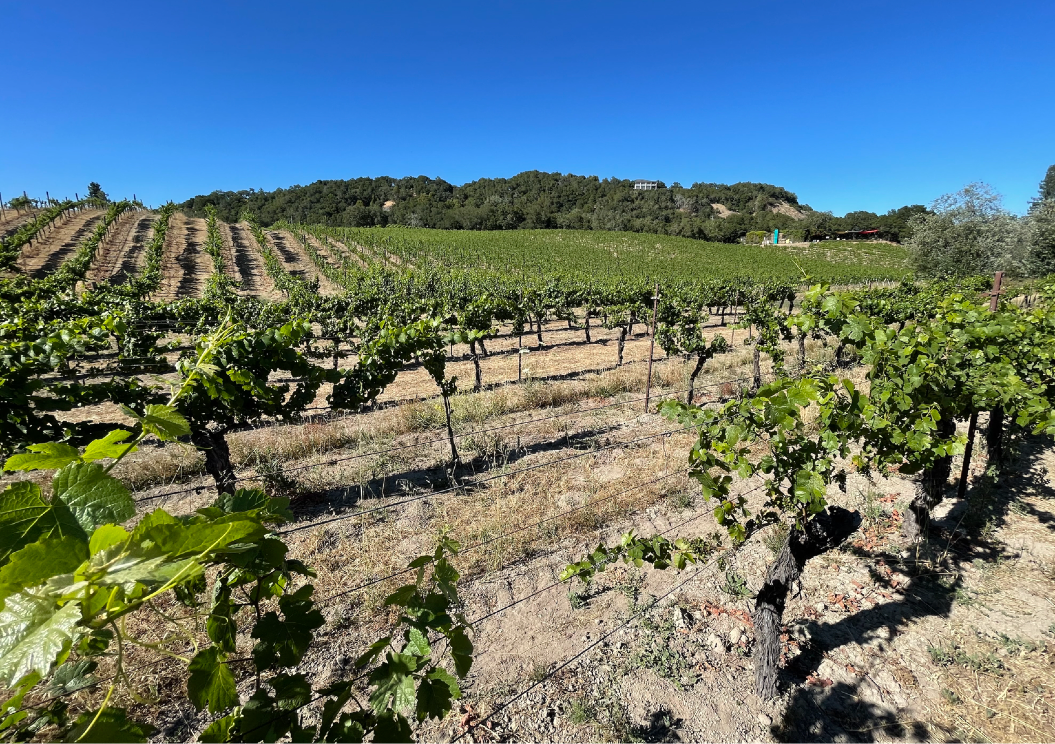
2012 Joseph Swan Vineyards Trenton Estate Vineyard Russian River Valley Pinot Noir 14.3% alc., $65. · Moderate garnet color in the glass. Aromas of oak-kissed blackberry, warn leather, raisin and grilled brisket. Noticeably silky on entry with layers of earthbound blackberry, black currant, and prune flavors in a middleweight plus style. The tannins have receded and only slightly grippy, while the fruit still shows some presence Showing its age but still enjoyable with a very generous blackberry-fueled finish. Score: 90
2016 Joseph Swan Vineyards Trenton Estate Vineyard Russian River Valley Pinot Noir 12.2% alc., $72. · Moderately dark garnet color in the glass. Savory and fruity aromas of underbrush, tilled earth, charcoal, boysenberry, blackberry and toasty oak. Ripely fruited with mid-weight plus richness. Very savory and earthy, with fruit flavors of purple berry and blackberry. Admirable harmony with an engaging smoothness on the palate. Highly unique in that the wine is not just about extravagant cherry fruit so common with other Russian River Valley Pinot Noirs. The fruit rises up over time in the glass with increasing length to the finish. Score: 94
2016 Joseph Swan Vineyards Trenton Estate Vineyard Pentagon Russian River Valley Pinot Noir 12.7% alc., 2 barrels, $100 (sold out). This one was only produced in one other year - 1997 - when it met the criteria for a separate bottling. · Moderately light garnet color in the glass. Seductive aromas of cherry, rose petal, spice box and sandy loam. The wine creates quite an impression on entry with a jubilee of well-spiced black cherry flavor. Very soft like the hair of an angel, with great purity of fruit flavor. Highly congenial at this age with immersed tannins and an extremely generous and lengthy finish. The wine packs plenty of flavor but leans more toward elegance than power. My notes say, “Fantastic!.” This is one of those wines you can still taste and remember where you drank it years later. My highest scoring Pinot Noir ever! Score: 99
More reviews: www.princeofpinot.com/vineyard/175/.
Elite California Pinot Noir Vineyards Part II: North Coast - Other Appellations
Jeff Brinkman, winemaker at Rhys Vineyards
Devil’s Gulch Vineyard
Owners: Mark and Myriam Pasternak
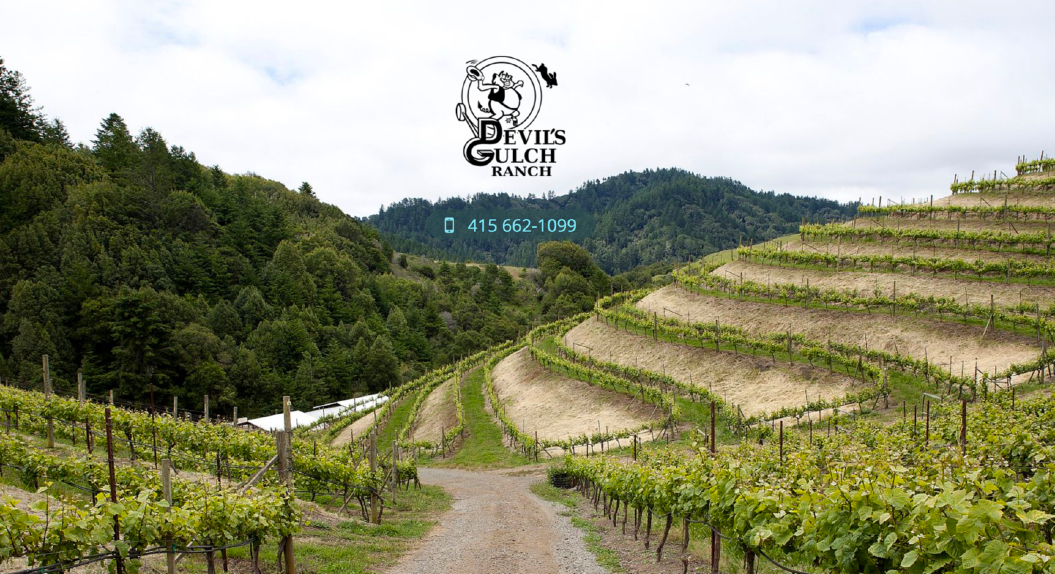
2018 Dutton-Goldfield Devil’s Gulch Vineyard Marin County Pinot Noir 13.8% alc., $72. · Moderate garnet color in the glass. The seductive perfume of Pinot Noir is difficult to capture but this wine has it. Aromas of black cherry, black raspberry, blueberry, sweet mulch and tilled earth. Very polished and refined on the palate, with a discreet concentration of dark cherry and raspberry fruit with both a floral and earthy accent. Oak lends a complimentary hand. Exquisite balance with a prolonged finish. When tasted the following day from a previously opened bottle, the wine soared to new heights, the spiciness was unreal, and the wine became better and better over time in the glass. Angel sent. Score: 96
More reviews: www.princeofpinot.com/vineyard/124/.
Donum Estate Vineyard
Owner: With the divorce of Anne and Markus Moeller-Racke and the sale of Buena Vista to Allied Domecq in
2001, Anne split off 147 acres of the Buena Vista Estate, retaining Tula Vista Ranch that she first
planted in 1989-1990 and renamed the property Donum, Latin for “Gift of the Land,” Estate. The Donum
Estate was sold to Winside, Inc. in late 2011, a partnership of Danish investors led by Allan and Mei
Warburg. Anne left Donum Ranch in the summer of 2019.
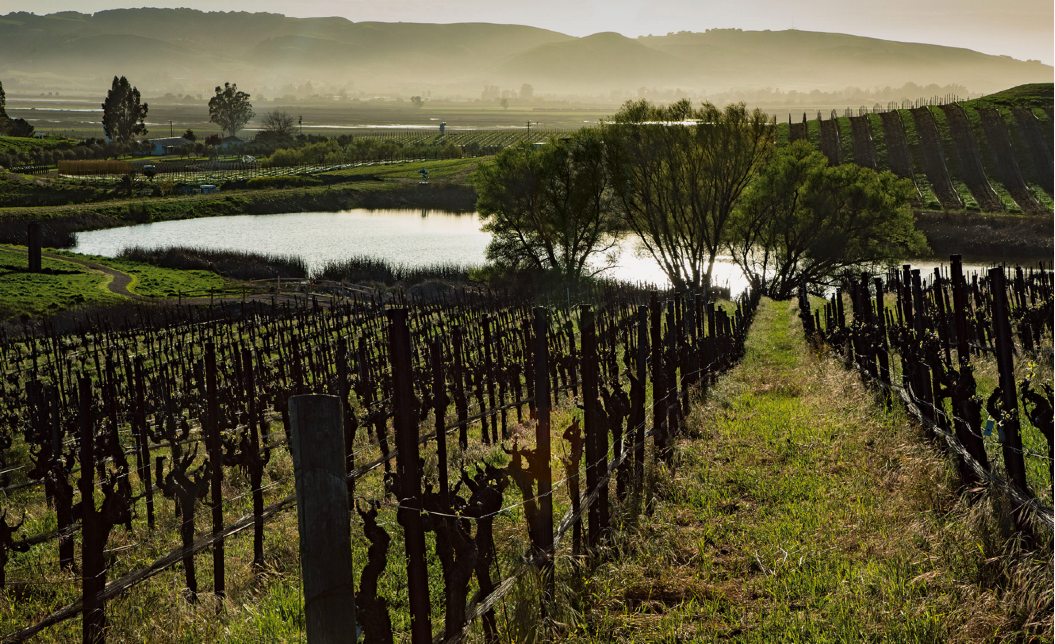
2017 Cattleya Belly of the Whale Carneros Pinot Noir 14.2% alc., 78 cases, $70. Roederer clone from the oldest part of the Donum Estate Vineyard. · Moderate garnet color in the glass. Clean and spirited aromas of fresh cherry, pomegranate, rose petal, sous bois, s’mores and cigar. Robust, virile, and fruit-driven, featuring deep, flamboyant flavors of black cherry and blackberry that flood the palate with goodness. Full-flavored, yet has welcome finesse and a silken mouthfeel. The felty tannins fit right in,, the vibrant acidity elevates, and a sneaky hint of savoriness peaks one’s interest. Reviewed June 4, 2019. Score: 93
2018 Donum Estate Single Vineyard Year of the Dog Carneros Pinot Noir 14.5% alc., $80. · Dark garnet color in the glass. Highly aromatic, with scents of fresh boysenberry, spice, cinnamon and dark chocolate cocoa. Oak-kissed fruit flavors of boysenberry, blueberry-pomegranate and blackberry in a mid-weight plus style showing modest tannins, a silken mouthfeel, and good length on the finish that reveals the slightest sense of alcoholic heat. Score: 92
2018 Donum Three Hills Single Vineyard Carneros Pinot Noir 14.1% alc., $85 · Moderately dark garnet color in the glass. Complex nose exhibiting aromas of purple berry, violets, underbrush, mocha and a hint of toast. Like mother’s milk, the velvety texture is extremely pleasing. Middleweight in concentration, with immersed tannins and a compliment of oak. Overall, admirable balance, ending with excellent length. Score: 93
2018 Donum West Slope Single Block Reserve Carneros Pinot Noir 14.5% alc., $125. · Moderately dark garnet color in the glass. Very earthy nose with aromas of damp soil, mushrooms on the grill, mocha and molasses. Packed in with a delightful core of purple berry fruit in a boulder expression of Pinot Noir. Creamy in texture, with a honed tannic backbone, a shadow of oak, and finishing remarkably long. Surely, the most longlived of the 2018 Donum Pinot Noirs tasted on this occasion. Score: 94
More reviews: www.princeofpinot.com/vineyard/606/.
Etude Estate Vineyards at Grace Benoist Ranch
Owner: Tony Soter founded Etude Winery in 1982 and sold the winery to Beringer Blass (Fosters Wine
Estates) in 2001. Soter had envisioned planting Pinot Noir at the Grace Benois Ranch, but Beringer has
acquired the property and first planted vines there.
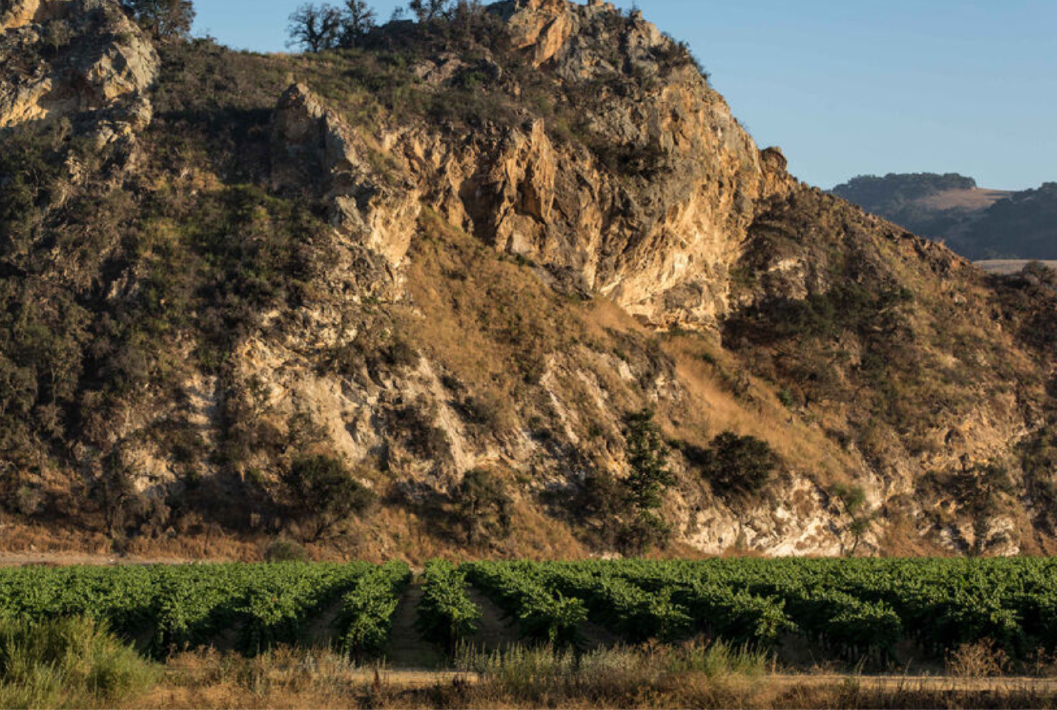
2017 Etude Heirloom Carneros Pinot Noir 14.9% alc.,$95. Composed of a diverse number of prized heritage vines. · Moderately dark garnet color in the glass. The nose lacks fruit features, instead revealing scents of earth flora and oak spice. Much more appealing on the palate with attention-grabbing flavors of black cherry, blackberry, Dr. Pepper, tarragon, vanilla and mocha java. Admirable balance at this high ABV. Oak adds a compliment. Moderately husky tannins show up on the extremely lengthy finish. A little more revealing and enjoyable when tasted the following day from a previously opened bottle. Score: 93
2018 Etude Grace Benoist Ranch Carneros Pinot Noir 14.1% alc., $46 (but can be found at retail for $36). Composed of 16 clones and selections. A blend of the best grapes from individual parcels on the Ranch. · Moderate garnet color in the glass. Terrific nose that enchants with aromas of black raspberry, grape jelly and allspice. Wow! The luscious core of purple and blackberry fruit essence really coats the palate with goodness. Fine-grain tannins are modest, the texture is sleek, and a hint of toasty oak adds flavor. The wine exits on a high note with bracing acidity and some length. This wine could be the best value in California Pinot Noir today and is a consistently reliable offering in each vintage in my experience. Score: 94
2018 Etude Laniger Vineyard Carneros Pinot Noir 14.2% alc., $85. · Dark garnet color in the glass. Very appealing aromas of blackberry reduction and violets. A luxurious mouthful of plum and purple and black berry fruits with a shadow of oak. Satisfying, with balanced tannins and a sweet-fruited finish with some length. Score: 92
2018 Etude Deer Camp Vineyard Carneros Pinot Noir 14.2% alc.,$85. · Dark garnet color in the glass. Pleasant aromas of dark berries and dark rose petal. Full-bodied in style, exhibiting a rush of boysenberry, black cherry, and black currant fruits with a hint of dark chocolate flavor. A voluptuous wine, yet has gentle power and admirable balance. Score: 92
More reviews: www.princeofpinot.com/vineyard/1707/.
Hanzell Vineyard
Owner: De Brye family since 1975
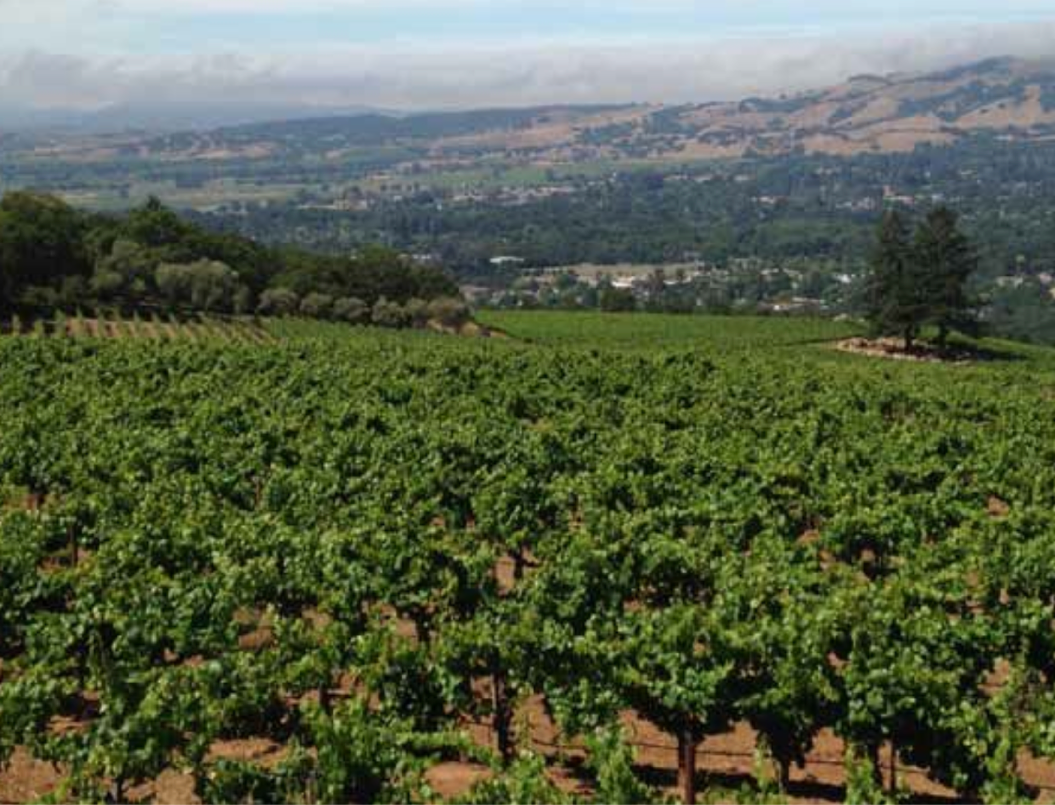
2014 Hanzell Sonoma Valley Pinot Noir 13.8% alc. · Light garnet color in the glass. Wonderfully inviting nose offering vivid aromas of dusty cherry, dark red raspberry, tilled earth and warn leather coat. Light to mid-weight in concentration with alluring flavors of dark red cherry, raspberry, mushroom and savory spices. Drinking at or near its apogee with soft tannins, juicy acidity and excellent length on the finish. Score: 94
2015 Hanzell Sonoma Valley Pinot Noir 13.9% alc. · Moderately light garnet color in the glass. Reserved aromas of boysenberry, black raspberry and purple grape. More richness in this vintage in a mid-weight plus style, with a riper profile of purple and black fruits. Still very fresh, with excellent harmony and impressive length on the generous finish. Although I am reluctant to use the term, there was definitely a mineral component to this wine. Score: 93
2016 Hanzell Sonoma Valley Pinot Noir 13.8% alc. · Aromas of dark cherry dusted with baking spices and an earthy undertone. Very impressive in a middleweight plus style, with waves of black cherry, black raspberry, pomegranate and spice flavors. Somewhat viscous with adroit integration of acid and tannin, really showing off on the long, long, long finish. A stellar wine of uncommon breeding. Score: 95
2017 Hanzell Sonoma Valley Pinot Noir 13.5% alc. $98. · Moderately light garnet color in the glass. More demure in this vintage, with aromas and flavors of cherry, red berry, dried herbs and toasty oak. The slightly tart cherry finish lacks staying power and reveals significant oak inflection. Maybe more time in the cellar may add to the appeal. Score: 91
2018 Hanzell Sonoma Valley Pinot Noir 13.6% alc, $98. · Moderate garnet color in the glass. Welcoming aromas of cherry, baking spices and sandalwood. Very bright cherry fruit marks the entry and loaded with spice and cola flavors expands through the mid-palate. A good cut of acidity propels the fruit through a ridiculously long finish. Clearly, the longest finish of any wine tasted in this vertical (2014-2018). Score: 96
More reviews: www.princeofpinot.com/vineyard/400/.
Haynes Vineyard
Owner: This property was purchased from Nathan Coombs by James Whitford in 1885. Irene Whitford
Haynes, along with her son Duncan and daughter-in-law Patricia Haynes, planted the first Pinot Noir
and Chardonnay vines. The vineyard was sold to billionaire businessman Gaylon Lawrence, Jr. for
$12.5 million in 2019.
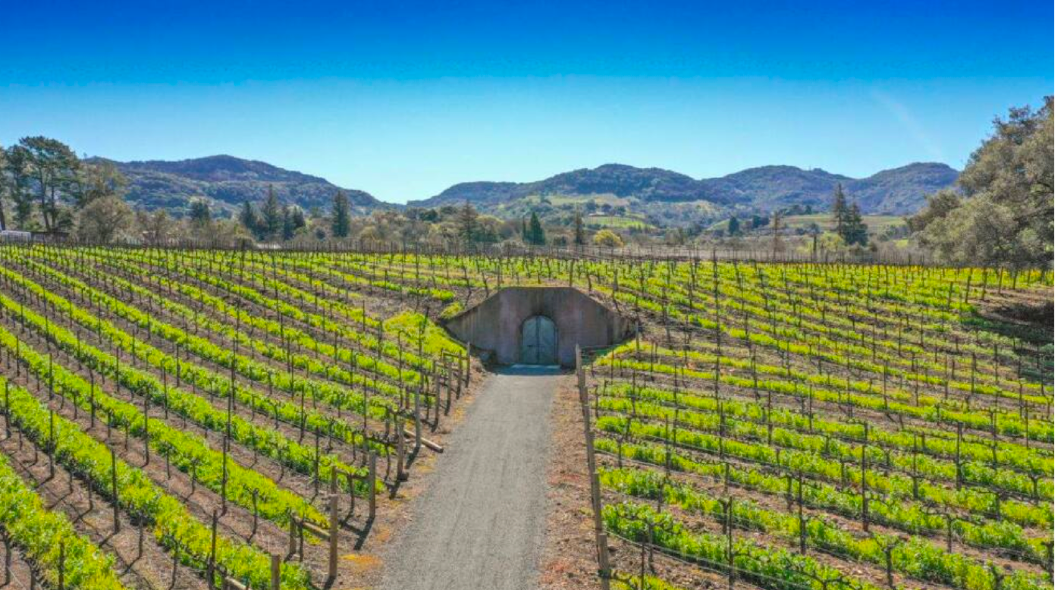
2011 Ancien Haynes Vineyard Old Block Coombsville Napa Valley Pinot Noir 14.0% alc. · Moderately dark garnet color in the glass. Soaring aromas of fresh black cherry coulis, spice, cola and red rose petal. The fruit on the nose fades some over time in the glass replaced by oak spice. Surprisingly bright and fresh flavors of dark cherry and raspberry with a hint of raisin. An impressive aged Pinot Noir upon opening with an amazingly long and intense finish. A lot going for it after pulling the cork but starts to fade in the glass over time. Completely exhausted when tasted the following day from a previously opened bottle. Probably a 94 point wine at its apogee. Drink up. Score: NR
2013 Ancien Haynes Vineyard Old Block Coombsville Napa Valley Pinot Noir 14.5% alc. · Moderately light garnet color in the glass. Demure aromas of dark cherry, red rose, baking spice and root beer. Crunchy red and black cherry fruit in a middleweight fashion with beautiful balance. Fresh and showing no definite tertiary character of aging. Very long on the redeeming finish. A bit faded when tasted the following day from a previously opened bottle so drink up within five years. Score: 92
2016 Ancien Haynes Vineyard Old Block Coombsville Napa Valley Pinot Noir 14.2% alc. · Dark garnet color in the glass. Very pleasant aromas of wine cave, blackberry and pomegranate fruits and a hint of ashen oak. Very ripe-fruited in a mid-weight plus style with flavors of black plum, boysenberry and blackberry. Seamless with a viscous mouthfeel and only a hint of tannin. The richest wine in the Ancien Haynes vertical tasted on this occasion but not veering to fruit compote. When tasted the following day, the nose had become exuberant with aromas of black fruits, spice and sandalwood and plenty of Pinot fruit singing on the long finish. Score: 93
2017 Ancien Haynes Vineyard Old Block Coombsville Napa Valley Pinot Noir 14.1% alc., 61 cases, $68. · Moderate garnet color in the glass. A knockout from the get-go. Large-scale aromas of black cherry, rose petal, ground savoury spice and wine cave persist over time in the glass. Very comforting in the mouth in a midweight style, featuring an unctuous core of cherry fruit accented with a touch of spice and complimentary barrel presence. Softly textured, with polished tannins, welcome acidity, and good length on the lip-smacking finish. Reviewed August 2020. Score: 95
2018 Ancien Haynes Vineyard Old Block Coombsville Napa Valley Pinot Noir 14.1% alc., $68. · Moderately dark garnet color in the glass. Spirited aromas of spiced cherry, crushed walnuts and graham. Expansive and generous in a mid-weight style with delicious flavors of red and black cherry, cola, spice, and a hint of burnt tobacco. Impeccably balanced and showing exceptional Pinot spirit with an ephemereal finish of uncommon generosity and length. My notes say, “Superb in every wine with the word superb underlined six times.” Score: 97
2016 Tulocay Haynes Vineyard Napa Valley Pinot Noir 13.7% alc., 137 cases, $40. · Moderate garnet color in the glass. The nose is well-perfumed with aromas of red cherry, cardamom spice, and a hint of toasty oak. Very suave and easily drinkable in a middleweight style, featuring a delicious core of black cherry and raspberry fruit back by reserved tannins. This wine seduces rather than attacks the palate. The barrel treatment is spot on and the finish is impressively long and vivid. Still superb when tasted the following day from a previously opened and re-corked bottle. Reviewed August 2020. Score: 94
More reviews: www.princeofpinot.com/vineyard/470/.
Exceptionally High-Scoring Wines in This Issue
992016 Joseph Swan Vineyards Trenton Estate Vineyard Pentagon Russian River Valley Pinot Noir
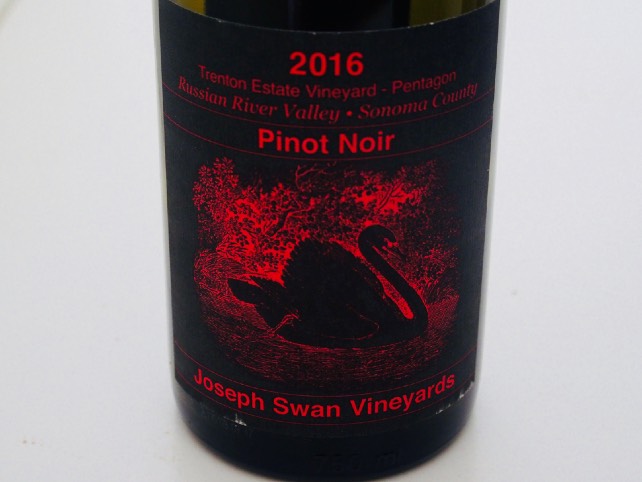
972018 Davis Family Vineyards Soul Patch Vineyard Russian River Valley Pinot Noir 2018 DuMOL Jentoft Vineyard “Ryan” Russian River Valley Pinot Noir
962018 Ancien Haynes Vineyard Coombsville Napa Valley Pinot Noir 2018 Dutton-Goldfield Devil’s Gulch Ranch Marin County Pinot Noir 2018 Hanzell Sonoma Valley Pinot Noir
952014 Woodenhead Ritchie Vineyard Cinder Cone Russian River Valley Pinot Noir 2015 Woodenhead Ritchie Vineyard Cinder Cone Russian River Valley Pinot Noir 2017 Ancien Haynes Vineyard Coombsville Napa Valley Pinot Noir 2017 J. Rochioli Vineyards & Winery Three Corner Vineyard Russian River Valley Pinot Noir 2017 Dehlinger Goldridge Russian River Valley Pinot Noir 2017 Lynmar Estate Old Vines Quail Hill Vineyard Russian River Valley Pinot Noir 2018 Hanzell Sonoma Valley Pinot Noir 2018 Williams Selyem Olivet Lane Vineyard Russian River Valley Pinot Noir 2019 Williams Selyem Rochioli Riverblock Russian River Valley Pinot Noir
942016 Dutton-Goldfield Deviate Sonoma Coast Pinot Noir 2016 Joseph Swan Vineyards Trenton Estate Vineyard Russian River Valley Pinot Noir 2016 Tulocay Haynes Vineyard Napa Valley Pinot Noir 2017 Castalia Rochioli Vineyard Russian River Valley Pinot Noir 2017 DuMOL Jentoft Vineyard Russian River Valley Pinot Noir 2017 Hartford Court Arrendell Vineyard Russian River Valley Pinot Noir 2017 Porter Creek Hillside Vineyard-Old Vine Russian River Valley Pinot Noir 2018 Dehlinger Goldridge Russian River Valley Pinot Noir 2018 Donum Estate West Slope Single Block Reserve Carneros Pinot Noir 2018 Etude Grace Benoist Ranch Vineyyard Carneros Pinot Noir 2014 Hanzell Sonoma Valley Pinot Noir 2018 Williams Selyem Allen Vineyard Pinot Noir 2018 Williams Selyem Rochioli Riverblock Russian River Valley Pinot Noir
Wine BriefsISFAR Critique 250: Importance of a Favorable Pattern of Drinking on Risk of Mortality The International Scientific Forum on Alcohol Research (ISFAR) recently reported on their critique of a scientific paper appearing in Mayo Clin Proc 2021;96:1758-1769 titled, “Alcohol Consumption Levels as Compared with Drinking Habits Predicting All-Cause Mortality and Cause-Specific Mortality in Current Drinkers.” Overall, Forum reviewers agreed with the main outcomes of the study, which indicate subjects with a favorable Drinking Habit Score (DHS), that is those consuming 3 or more days/week and consuming alcohol with meals, in comparison with other drinkers had significantly lower all-cause mortality, cardiovascular (CDV) mortality, cancer mortality, and death from other causes. The authors report that for all-cause, CVD, and other cause mortality, subjects with a favorable DHS showed a U-shaped or L-shaped curve. Even the heaviest drinkers had a mortality risk the same or lower than that of abstainers. Only for cancer mortality was there an increase in risk for subjects in the higher category of alcohol intake, leading to a J-shaped curve. The authors did not report specifically on the types of beverage being consumed but the subjects were in southern Europe where typically wine is consumed with meals. We now realize the importance of the pattern of drinking. This constitutes not only the type of beverage and frequency of drinking, but also the consumption of alcohol with food and the absence of binge drinking. The pattern of drinking appears to be as important as, or even more important than, the quantity of alcohol consumed. A Small Amount of Alcohol Each Day Lowers Risk Protects the Heart in People with CVD Those who have heart disease who imbibe a small amount of alcohol each day have a lower risk of having another heart attack, stroke, angina or early death. This very large study found that drinking just over a bottle of wine each week (105 grams of alcohol) appeared to protect people who had previously suffered a heart attack from having another attack or early death. This amount of alcohol is much less than currently recommended in the US (196 grams per week). Drinking even less alcohol, that is 8 grams a day lowers the risk of a second cardiovascular event by 27%, while drinking only 6 grams per day (a standard glass of 12% table wine is about 5 ounces or 14 grams of alcohol) found the benefit to almost double to 50% less risk.The study would indicate that those who suffer with CVD and resultant angina, stroke or heart attack, don’t necessarily have to stop drinking but they should consider lowering their weekly alcohol intake. Moderate Drinking Said to Contribute to Well-Being and Health Professor Pierre-Louis Teissedre, the chairman of the Health and Safety Commission of the International Organization of Vine and Wine and an enology researcher at the Bordeaux Institute of Vine and Wine Sciences (ISVV), said recently, “If I drink wine in moderation with a meal, it brings me pleasure, flavor, and emotion. It is an essential part of a happy lifestyle. When you are deprived of it, you feel a loss. Moderate wine consumption should be safeguarded and promoted. It contributes to our well-being and therefore to our health.” David Spiegelhalter, a professor at the University of Cambridge, wrote something online a few years back but his point remains timely, “Claiming there is no ‘safe’ level of alcohol consumption does not seem to be an argument for abstention. There is no safe level of driving, but the government does not recommend that people avoid driving. Come to think of it, there is no safe level of living, but nobody would recommend abstention.” In-Depth Scientific Review Reveals Wine and Cheese in Moderation Can Lower Risk of Heart Disease Dr. Gabriele Riccardi, professor of endocrinology and metabolic disease at the University of Naples Federico II, published the results of an intensive review of the literature to determine the association of different foods and the incidence of cardiovascular disease (CVD). Riccardi found that the regular consumption of cheese, coffee (three cups per day), and wine led to a reduced incidence of CVD. With wine specifically, two glasses of wine per day was linked to a 32 percent decrease in CVD compared with people who abstained but drinking more than this increases the risk. He recommends moderate consumption of full-bodied red wines because they are highest in polyphenols and have important anti-inflammatory effects that can reduce the risk of CVD and diabetes. Visit: https://www.winespectator.com/articles/moderate-wine-cheese-and-coffee-consumption-linked-to-healthier-hearts Jamie Goode Doesn’t Feel Guilty About Drinking Wine - Neither Should You Jamie Goode is a highly respected wine writer from the UK who has written multiple books on wine. In his blog, Wineanorak at www.wineanorak.com, he recently approached the subject of wine drinking and the widespread message that there is no safe level of drinking. His conclusion is as follows. “The answer to misuse is not disuse, but correct use. We need to fight back against the current polarized take on drinking. Wine is a positive force when used correctly. It’s healthful, it brings joy, it’s culturally rich, and it lends itself to healthy modest consumption with food. Its place at the table is what makes it such a rich cultural gastronomic item: as we eat together, a glass or two of wine opens us up to each other. It relaxes us and sets us free to more fully engage with each other socially. It also serves an important psychological role: we take a sip of wine and this signifies a social time - we are off the clock - we are relaxing. We shouldn’t be made to feel guilty about our drinking.” Noted Wine Writer Dan Berger Links Wine Consumption with Longevity Dan Berger, writing August 5, 2021, in the Napa Valley Register, in support of the health benefits of wine consumption in moderation. He listed the ages at death of numerous wine luminaries: Andre Tchelistcheff, 92; Napa Valley winery owner Peter Mondavi, SR., 102; Modesto winery owner Ernest Gallo, 97; Napa winery owner Robert Mondavi, 94; wine author Leon Adams, 90; British wine critic J. Michael Broadbent, 92 and so forth. Some of these men were also lifelong smokers. I like to point out that America’s beloved spokesman, Will Rogers, once said, “The wine had such ill effects on Noah’s health that it was all he could do to live 950 years. Just 19 years short of Methuselah. Show me a total abstainer that ever lived that long.” Extensive Article on the History of Wine and Its Arrival in Santa Barbara County Judith Dale has penned a comprehensive look at the history of wine in Santa Barbara County accompanied by many historical photographs. This is a very worthwhile 5 minute read: https://syvnews.com/lifestyles/columns/judith-dale-the-history-of-wine-and-its-arrival-in-santa-barbara-county/article_f4b395bfc84d-53eb-b0b2-c353560f896d.html Saving Wine Grapes from Smoke Vintage 2020 was a complete loss for many wineries in the North Coast of California and the Willamette Valley of Oregon due to smoke taint from wildfires. Wildfires also threaten the 2021 harvest. I recently learned of Purfresh Wine’s ozone (O3) technology used to treat grapes pre-crush to improve fermentation and wine quality as well as to remove the smoke taint. Purfresh Wine’s success in saving smoke-affected grapes was recently featured in Wine Business Monthly and covered in the Napa Valley Register. The benefits of Purfresh Wine’s system are purported to include removal of sulfur, pesticides, and fungicides pre-crush, reduced need for SO2 post-crush, reduction of bad bacteria and year issues (Brett), helps limit and avoid stuck fermentations, improvement in roundness, and fruit-forward palate note, increased content of health-promoting stilbenes, and removal or reduction of smoke taint molecules pre-crush. Of significant importance is that Purfresh ozone container trials show promise for smoke-affected wine grapes. Read more at www.purfreshclean.com. A related approach was reported in the publication Molecules in March 2021. The researchers from Australia looked at the mitigation of smoke taint by post-harvest ozone treatment of grapes. The study involved Merlot grapes. The ozone treatment not only gave significantly lower volatile phenol and volatile phenyl glycoside concentrations but also diminished the sensory perception of smoke taint in the finished wine. the ozone works more effectively when smoke-derived volatile phenols are in their free (aglycone) form, rather than glycosylated forms. Got Brett? Some people like the smell of Band-Aid or sweaty saddle in their Pinot Noir but I am not a fan. Some drinkers believe Brettanomyces yeast (Brett) can add complexity to a wine but producing a wine with just a little bit of Brett is a dicey proposition. So-called “Brett,” is the result of a number of compounds produced by the yeast Brettanomyces bruxellensis and it's relative Dekkera bruxulensis. Three important aromatic compounds are most important: (1) 4-ethyl phenol produces the aroma of Band-Aids, antiseptic and horse stable, 4-ethyl guaiacol has the odor of smoked bacon, spice, or cloves, and (3) isovaleric acid has the smell of sweaty animals, cheese and rancidity. Brett is almost exclusively found in red wine as a result of complicated organic chemistry enzyme processes originating from tannin substances extracted from red grape skins. Brett has become infrequent in domestic Pinot Noir because of careful barrel hygiene. Yeasts love oak barrels and grow readily in them in a warm cellar. Read more by David W. Brown in an article titled, “Understanding Brett and Its Decisive Impact on Wine” at www.pix.wine/the-drop/what-is-brett-yeast/. Clos Pepe Vineyards and Estate Villa for Sale for $9.75 Million The vineyard, located in the Sta. Rita Hills AVA on Highway 246 in Lompoc, has produced award-winning Pinot Noir and Chardonnay for many years. Steve and Cathy Pepe and Cathy’s son Wes Hagen established this estate vineyard and wine label after purchasing the property in 1994. A 15-year vineyard lease was granted to Hall Wines of Napa who marketed the Clos Pepe Vineyard Pinot Noir under their Walt label. The Pepes retained ownership of the property and lived in the villa on the property until May 2021 when the vineyard and villa were listed for sale. I consider the Clos Pepe Vineyard one of California’s elite Pinot Noir vineyards.
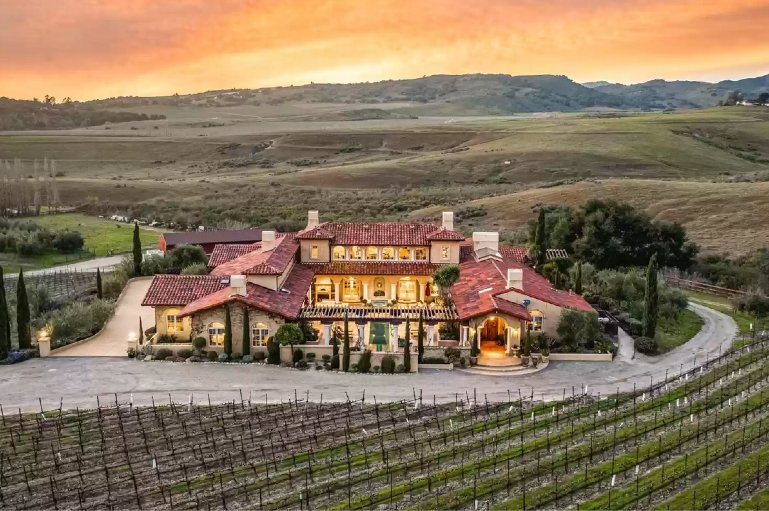 Stephen Tanzer Becomes Vinous Critic Emeritus For years in the 1980s and 1990s I subscribed to Tanzer’s The New York Wine Cellar and later his International Wine Cellar publication. I acquired a wealth of knowledge about wine, particularly Burgundy and his wine journal’s wine reviews led the groundwork for my reviews when I launched the PinotFile in 2002. It is said that he tasted in excess of ten thousand wines in a year and did this for over three decades. Now Tanzer is transitioning his responsibilities to the team of critics at Vinous and continues to write occasional articles. Visit www.vinous.com.
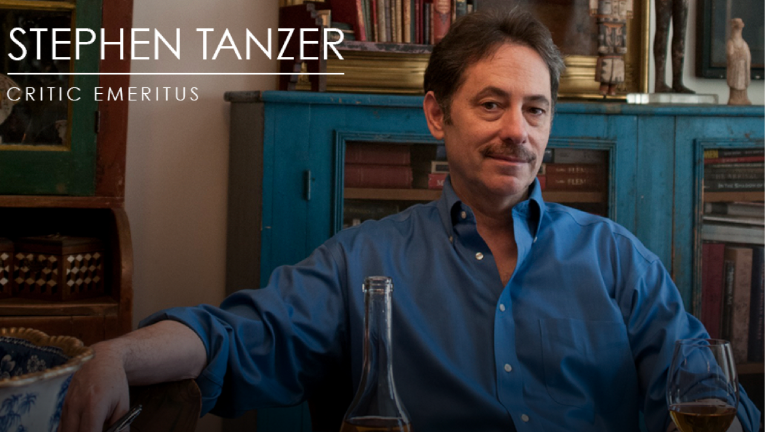 2022 International Pinot Noir Celebration (IPNC) Tickets Now Available Now in its 36th year, the 2002 IPNC is set for July 29-31, 2022, at Linfield University in McMinnville, Oregon. This year’s theme is “Through Rosé Colored Glasses.” The Master of Ceremonies will be rising wine star, Phillipe André. The all-inclusive weekend ticket includes intimate access to a special Sparkling Wine Session which will showcase wines from 12 of the finest Champagne and Sparkling Wine producers in the world. There will also be 70+ premium Pinot Noir producers from all corners of the globe, dozens of James Beard-worthy and award-winning chefs from the Pacific Northwest. Buy tickets now at www.ipnc.org. IPNC 2020 was canceled and IPNC 2021 was virtual so the opportunity to attend in person is extra special.
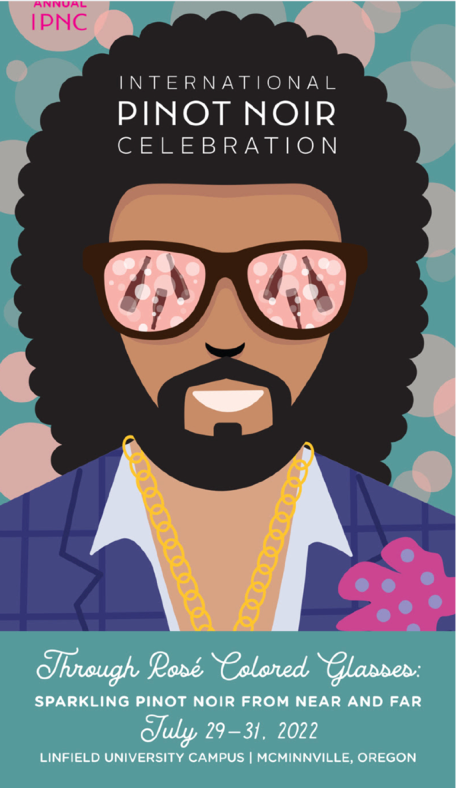 Second Annual Palm Springs Pinot Noir Fest Also known as “A Passion 4 Pinot,” this event is scheduled for Saturday, January 8, 2022, at the J.W. Marriott Desert Springs Resort & Spa in Palm Desert. Some of the 60 top-tier Pinot Noir producers pouring at this event include Balletto, Beau Marchais, Blue Farm, Bucher, Clarice Wine Co., COBB Wines, Domaine Anderson, Domaine Della, Drew, FEL, Foxen, Freeman, Gary Farrell, George, Kanzler, Kosta Browne, Lynmar Estate, Maggy Hawk, Papapietro Perry, ROAR, Sangiacomo Family Vineyards, Saxon Brown, Scherrer, Small Vines, The Calling, Tongue Dancer Wines, Twomey, and Williams Selyem. For more information visit www.palmspringspinotfest.com. Tickets will go on sale September 20, 2021. Josh Jensen Looks Back on 40 Years Laura Ness wrote an excellent article at www.sanbenito.com dated July 19, 2021, and well worth a read. Josh, the founder of Calera Wine Co. in Hollister is now retired after selling his winery to Duckhorn Wine Company in 2016. He looks back on 40 years at the helm of this winery. His colleagues in school were all certain he would fail with the Calera project but as Laura points out, he has had the last laugh. Marc Goldberg: Another Accomplished Pinot Noir Pioneer of Less Repute Mira Advann Honeycutt wrote an article about vintner Marc Goldberg in the Napa Valley Register on June 10, 2021. He has earned a reputation for successfully growing and producing excellent Pinot Noir in the western part of the Paso Robles AVA at his Windward Vineyard. Along with his spouse, Maggie D’Ambrosia, they launched Windward Vineyard in 1988 in the cooler side of western Paso Robles’ along Highway 46 West near Templeton. The famed HMR Pinot Noir vineyard is close by and indicated to Marc that the potential for Pinot Noir winegrowing lay in this region. Marc and Maggie were both former hospital administrators and Pittsburgh natives with a love for Burgundy. 15 acres of Pinot Noir were planted in 1990 with selections from the HMR Vineyard, Adelsheim (Oregon), Bien Nacido, and Sanford & Benedict. The winery’s Pinot Noir is a monopole, signifying that the vineyard is controlled by and the grapes only harvested by one winery. I reviewed Windward Pinot Noirs favorably from 1999 through the 2005 vintages, but none since, and it is high time I visit again to taste the maturity of the vineyard. I have added it to my bucket list. Visit www.windwardvineyard.com. Palos Verdes Peninsula is California’s Newest AVA Pinot Noir from Southern California? You bet. After three years, Palos Verdes Peninsula became the 142nd AVA in California. The drive for AVA recognition was led by Jim York, owner of Catalina View Wines that grows Pinot Noir and Chardonnay in the seaside region. Ken Brown is the winemaker for Catalina View Wines’ Palos Verdes Peninsula Pinot Noir. Triennes Rosé: A Wine with an Exceptional Pedigree Two of the greatest names in Burgundy - Jacques Seysses, founder of Domaine Dujac, and Aubert de Villaine, co-owner of Domaine de la Romanée-Conti - are the partners behind this property in the South of France, northeast of Marseille, and about 20 miles inland from Bandol. Through the years, the pair have transformed this 46-hectare site into one of the top wine estates in Provence. Imagine that one of the most exceptional values in French rosé can boast a bloodline tracing back to the most historic and expensive wines of Burgundy. Produced mainly from Cinsault with a bit of Syrah and Grenache, it is a best seller. The 2020 vintage is priced at about $14 a bottle (12.5% alc.). Available at Woodland Hills Wine Company and other retail outlets.
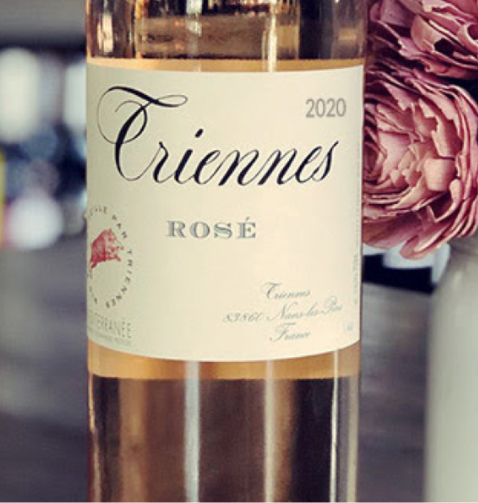 Flash! New Research on Wine & Longevity Spanish researchers at the University of Valencia in Spain reported in August at www.ciencia-e-vinho.com a study of the effects of red wine on longevity and its associated genes in human populations and Drosophila flies, in controlled conditions. Discoveries showed that the consumption of two glasses of 200 ml of red wine, one during lunch and another with dinner for two weeks, resulted in a significant increase in the expression of genes implicated in longevity in immune cells. Also, there was an increment of longevity by 12% in the flies that had consumed red wine mixed with their food, in moderate amounts, throughout their lives. The researchers concluded that moderate consumption of wine augments the expression of the key genes associated with longevity in humans. And An Unhealthy Report A study conducted by RTI International, a nonprofit research institute, reported in August that compared with February 2020 at the start of the COVID-19 pandemic, consumption of alcoholic beverages in April and November 2020 increased by 36% and 39%. The largest increases in consumption were observed in Black people, people with children, and people with mental health problems who drink to cope. Among those with children, the largest increase in consumption occurred among women with young children (ages 0-5). Russian River Paulée Dinner Inspired by the late November Paulée de Mersault in Burgundy, this event is a celebration of the new harvest where winemakers gather with those who share their passion for wine. The winemakers dig deep into their personal cellars to bring out amazing bottles (not just Pinot Noir). Guests are invited to do the same. 25 premier Russian River Valley wineries will be participants including The date is Friday, September 3. The location is 7394 Starr Rd, Windsor. The cost is $250. For information and tickets, go to www.russianrivervalley.org/events/paulee-dinner. Use PAULEE2021 for a discount on your ticket.
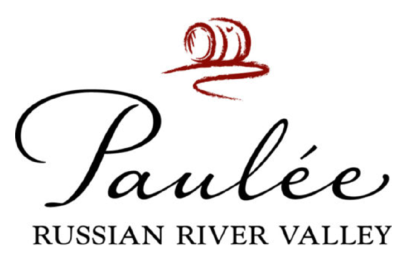
|